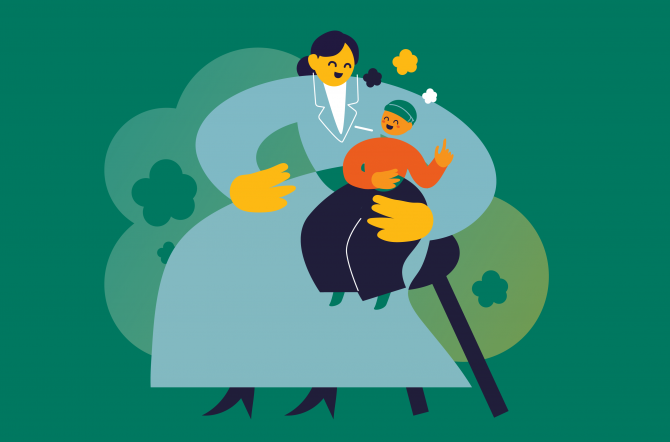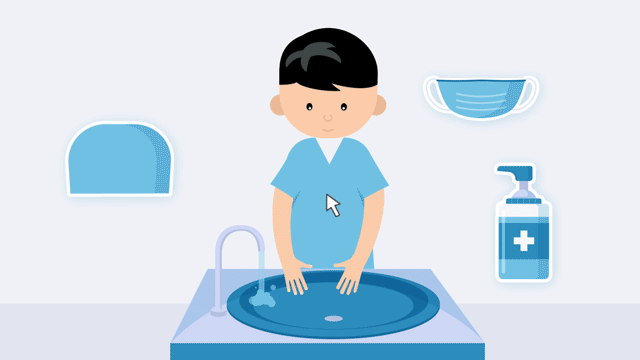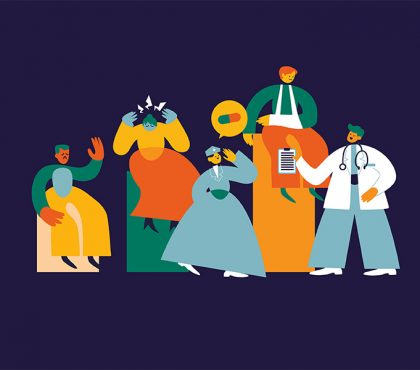Communication with children in healthcare means you have to be a good communicator, a teacher, a parent, or even a child simultaneously. Pediatric patients have unique needs and unexpected healthcare understanding that changes how you make a patient education campaign. This article will explain child communication and its application in your campaign execution.
Know the challenges of communication with children in healthcare
1. Emotion is the most important ingredient
The trickiest part of child communication is detecting all emotions lying beneath children. Compared to adults, a tremendous amount of emotion in children needs to be processed. Why? Because it impacts how pediatrics receive healthcare information. If they fear, we need to decrease fear before delivering the message. So basically, you explain the difficult medical concept in their terms and tone of voice.
2. Children are not the only target audience
You need to educate their parents or guardians and deal with their distress. Some parents may get angry and sorrowful outbursts. Some parents may be skeptical of any healthcare information that affects their children. Getting parents involved in child communication means you need to prepare 3 things at once:
- Educate parents on their children’s health issues
- Get parents to help and motivate children during the treatment
- Decide on the right timing: When should you get parents involved during the communication campaign? And when should you remove parents away from children?
Communication with children in healthcare: 6 tips to consider
1. Tailor communication – old thing with advanced tips
Child communication combines simple language with emotions. But over the years, we’ve found out that formula is sometimes too much of a good thing. For example, we all know that simplifying medical knowledge is good; but some children feel proud when learning new things. Thus, if children understand some medical terms, a too-simple explanation may insult them. Our tip here is to tailor your campaign message according to children’s age and level of understanding:
- Use the power of body language and role-playing stories.
- Avoid using negative words like “hurt” and “sting”.
- Give compliments or rewards to celebrate children’s resilience and bravery.
2. Deliver message to the right media
Some children love cartoons, some are not qualified to read, and some need emotional pampers. In the above tip, we’ve discussed the child communication formula – simple language with emotions. But most media deliver part of this formula: simple language or emotions. That’s why you need a constructive media plan and know when to use media to provide knowledge and what time to use media to deliver emotions.
For a more effective media strategy, it’s best to use media that simultaneously deliver simple language and emotions, like animation. The below video is about how we provide mental health information with a light-hearted feeling for children. Since mental health is an implicit health issue, it’s hard for children and their families to recognize. Thus, we apply mental health knowledge via school life scenarios and create a story between a child with other animal characters. The cute characters and different emotions make the whole video a bedtime story than a patient education video.
Recommend reading:
3. Create a children-friendly communication environment
Choosing the right online platform for children to deliver healthcare messages will prevent them from cyberbullying and other toxic information. Meanwhile, offline healthcare events make the environment less scary with toys, books, and crayons instead of medical equipment.
A children-friendly communication environment will put children at ease in receiving healthcare messages.
4. Make child health education a game
Another idea to engage children with healthcare information is to gamify the knowledge. A game not only creates a fun experience for children but also helps them remember and apply. Take a look at the below interactive content. To educate children on COVID-19 preventive rules, F.Learning turns the hand sanitizer process into a drag-and-drop game.
5. Get their parents involved
Parents are healthcare decision-makers. They involve in how children understand their issues and do the treatment. They also need a separate healthcare campaign with different content. Here are some ideas to educate parents in child communication campaign:
- Educate parents to motivate children during treatment.
- Help parents to create a safe zone for children to absorb healthcare knowledge.
- Guide patients to teach children healthcare knowledge and help them follow the treatment.
6. Get the community involved
The most challenging part of the patient education campaign is maintaining social engagement over a long period, and so do we. That’s where the community comes in. Sometimes when F.Learning plans a patient education for our clients, we find ourselves stuck in the terms “patient.” This term limits our thinking on the target audience. We keep focusing on children and their parents while forgetting the influential audience out there – the community.
In the interview with Jan Lansing – VP of marketing and communication of CHOC’s children’s hospital, she said, “An adult having cancer is tragic. But the level of tragedy that most people infer from a child having cancer is a powerfully emotional story.” The interview changes our mindset. Children are considered an underprivileged group and deserve protection, love, and care from the community. So why don’t we create an awareness campaign to earn support from the public? You indeed get the power behind delivering healthcare messages back to children and their parents.
Our last thought
Child health communication is the most challenging aspect of healthcare, and so do the communication campaign. As a healthcare communication manager, put your title down and let yourself be a child again first. Since you walk in children’s shoes, it’s an excellent start to a successful campaign.
Read more:




